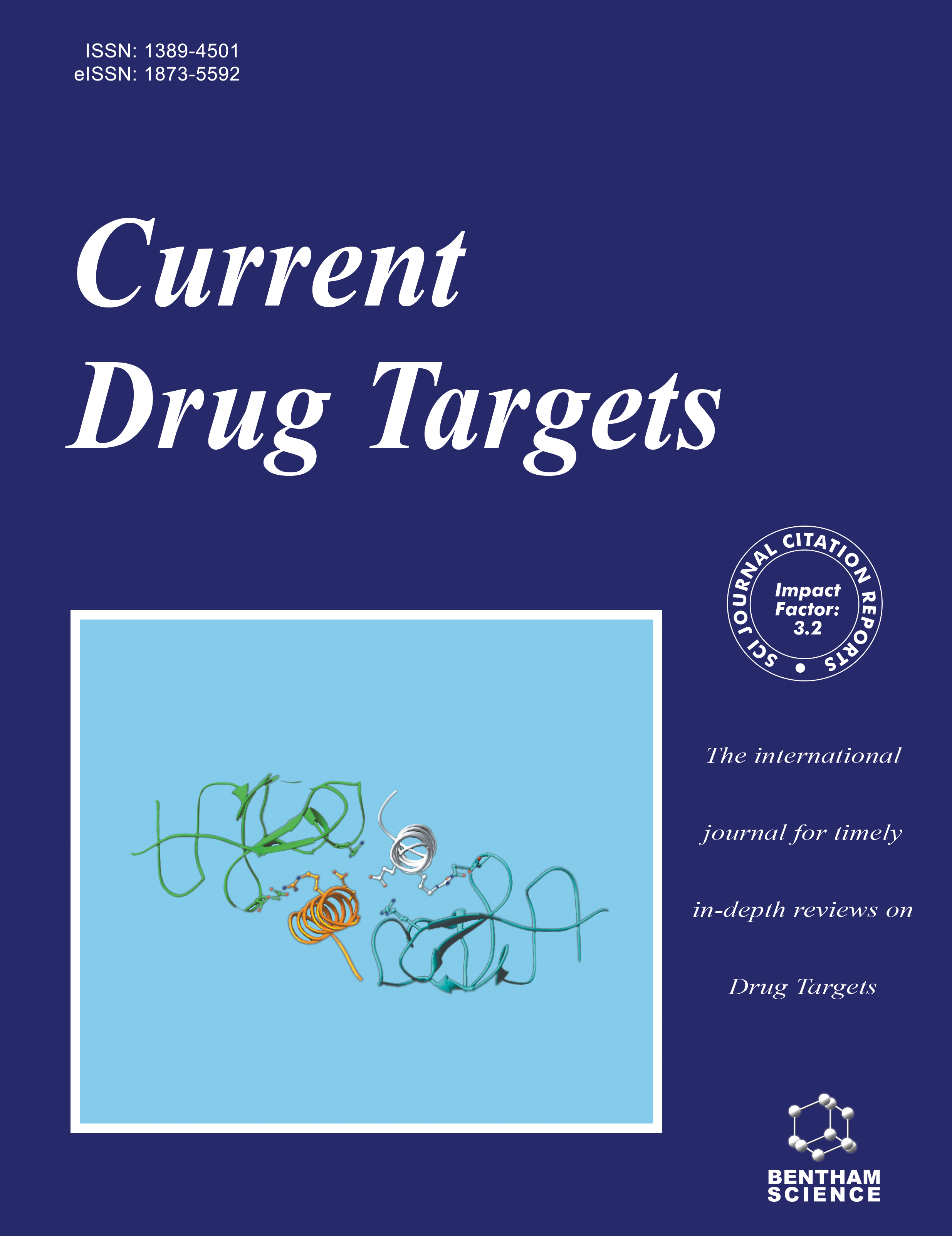- Home
- A-Z Publications
- Current Drug Targets
- Previous Issues
- Volume 16, Issue 1, 2015
Current Drug Targets - Volume 16, Issue 1, 2015
Volume 16, Issue 1, 2015
-
-
Coping With Oxidative Stress. The Yeast Model
More LessAuthors: Maria Angeles de la Torre-Ruiz, Nuria Pujol and Venkatraghavan SundaranSaccharomyces cerevisiae is an optimal model to study stress responses for various reasons: i) budding yeast genome presents a high degree of homology with the human genome; ii) there are many proteins that show an elevated functional homology with specific human proteins; iii) it is a system whose genetic manipulation is reasonably easy and cheaper than other models; iv) the possibility of working with an haploid stat Read More
-
-
-
ROS-Mediated DNA Methylation Pattern Alterations in Carcinogenesis
More LessAuthors: Qihan Wu and Xiaohua NiElevated levels of both reactive oxygen species (ROS) and DNA methylation are characteristic of various types of cancer cells. However, the relation between these two is not well understood. Here we will discuss the cause-consequence relationship between ROS and DNA methylation. Cancer research reveals that disregulation of DNA methylation results in regional CpG island hypermethylation and generalized genomic Read More
-
-
-
Oxidative Stress and Neurodegenerative Diseases: A Neurotrophic Approach
More LessAuthors: Carme Espinet, Hugo Gonzalo, Catherine Fleitas, Maria J. Menal and Joaquim EgeaNeurotrophins are important neurotrophic factors involved in the survival, differentiation and function of a wide variety of neuron populations. A common feature for most neurotrophins is that they are synthesized as precursor proteins (pro-neurotrophins) that upon being processed by proteolysis render the mature active form responsible for most of their trophic functions. However, some of the pro-neurotrophin form Read More
-
-
-
Pharmacological Modulation of Reactive Oxygen Species in Cancer Treatment
More LessAuthors: Judit Ribas, Paolo Mattiolo and Jacint BoixAerobic metabolism of mammalian cells leads to the generation of reactive oxygen species (ROS). To cope with this toxicity, evolution provided cells with effective antioxidant systems like glutathione. Current anticancer therapies focus on the cancer dependence on oncogenes and non-oncogenes. Tumors trigger mechanisms to circumvent the oncogenic stress and to escape cell death. In this context we have studied 2- Read More
-
-
-
The Nuclear Orphan Receptor NR4A1 and NR4A3 as Tumor Suppressors in Hematologic Neoplasms
More LessAuthors: Kerstin Wenzl, Katharina Troppan, Peter Neumeister and Alexander J.A. DeutschNR4A1 (Nur77) belongs together with NR4A2 (Nurr1) and NR4A3 (NOR-1) to the nuclear orphan receptors of the NR4A-family. Their activation is generally short lived, the cellular outcome is a stimulus- and cell context-dependent differential activation of NR4A target genes that regulate cell cycle, apoptosis, inflammation, atherogenesis, metabolism, DNA repair and tumorigenesis. NR4A1 and NR4A3 were identified to functio Read More
-
-
-
Next Generation Sequencing in Non-Small Cell Lung Cancer: New Avenues Toward the Personalized Medicine
More LessNon-small cell lung cancer (NSCLC) is one of the most common causes of cancer-related death worldwide. Based on the patient’s stage of disease, treatment options include surgery, radiotherapy, and chemotherapy. Although chemotherapy remains the main therapeutic approach for advanced NSCLC, targeted therapy represents a good chance of treatment for this subgroup of patients. Currently this approach is based on previ Read More
-
-
-
Affinity-Based Methods in Drug-Target Discovery
More LessTarget discovery using the molecular approach, as opposed to the more traditional systems approach requires the study of the cellular or biological process underlying a condition or disease. The approaches that are employed by the “bench” scientist may be genetic, genomic or proteomic and each has its rightful place in the drug-target discovery process. Affinity-based proteomic techniques currently used in drug-discovery dra Read More
-
-
-
Prospects of Molecularly-Targeted Therapies for Cervical Cancer Treatment
More LessCervical cancer is the third most common cancer among women worldwide and is responsible for 275.000 deaths each year. The development of cervical cancer has been linked to cell cycle disturbances caused by persistent expression of high- risk HPV oncoproteins (E5, E6 and E7), which modulate the expression of host genes and cellular microRNAs. An estimated 5 million women throughout the world are currently infect Read More
-
Volumes & issues
-
Volume 26 (2025)
-
Volume 25 (2024)
-
Volume 24 (2023)
-
Volume 23 (2022)
-
Volume 22 (2021)
-
Volume 21 (2020)
-
Volume 20 (2019)
-
Volume 19 (2018)
-
Volume 18 (2017)
-
Volume 17 (2016)
-
Volume 16 (2015)
-
Volume 15 (2014)
-
Volume 14 (2013)
-
Volume 13 (2012)
-
Volume 12 (2011)
-
Volume 11 (2010)
-
Volume 10 (2009)
-
Volume 9 (2008)
-
Volume 8 (2007)
-
Volume 7 (2006)
-
Volume 6 (2005)
-
Volume 5 (2004)
-
Volume 4 (2003)
-
Volume 3 (2002)
-
Volume 2 (2001)
-
Volume 1 (2000)
Most Read This Month
Article
content/journals/cdt
Journal
10
5
false
en


